EXLA owns 100% of the Rimrock Gold Project, located within the Ivanhoe Mining District of Nevada. The Rimrock Gold Project comprises 133 unpatented lode claims that cover an area of 2,722.56 acres.
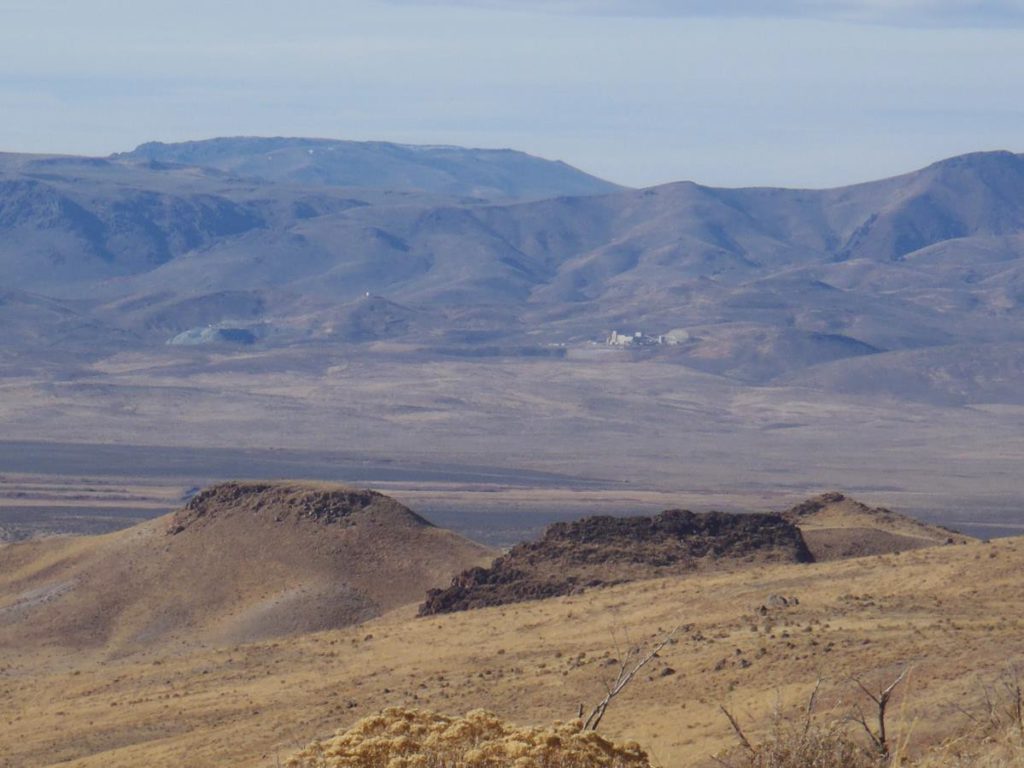
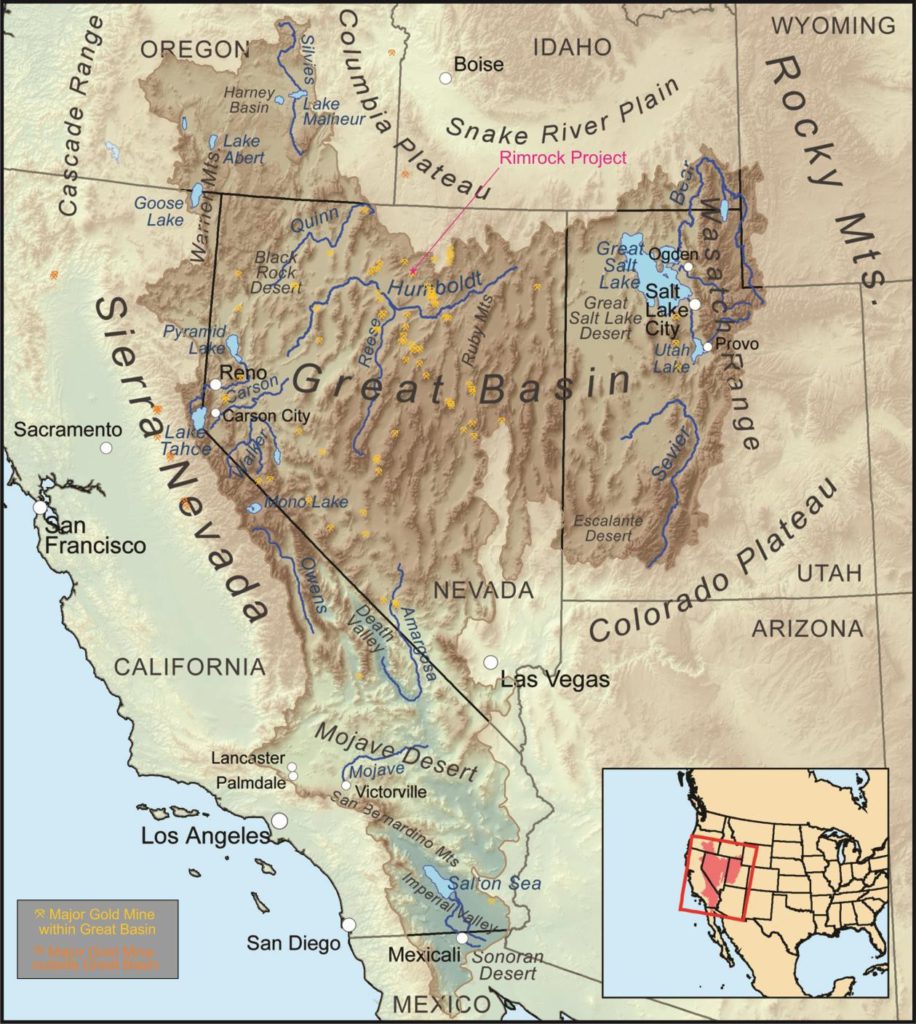
The Property is proximal to two of Hecla Mining Company’s gold-silver mines that are currently on Care and Maintenance but are being further explored by drilling.
- The Hollister Mine lies contiguously bounding the Rimrock claims to the south, and had an originally estimated 2 million ounces of high-grade gold-silver.
- Hecla’s Midas Mine is located 14 km to the northwest of Rimrock, and it contained an estimated 3 million ounces of high-grade gold and 25 million ounces of high-grade silver.
Hecla recently made a discovery of high-grade gold-silver mineralization at its Green Racer Property, which lies between Midas and Rimrock; on which Hecla has been busy drilling.The Property also is located just 16 km northwest of the giant Goldstrike-Meikle Mining Complex owned and operated by Nevada Gold Mines LLC.
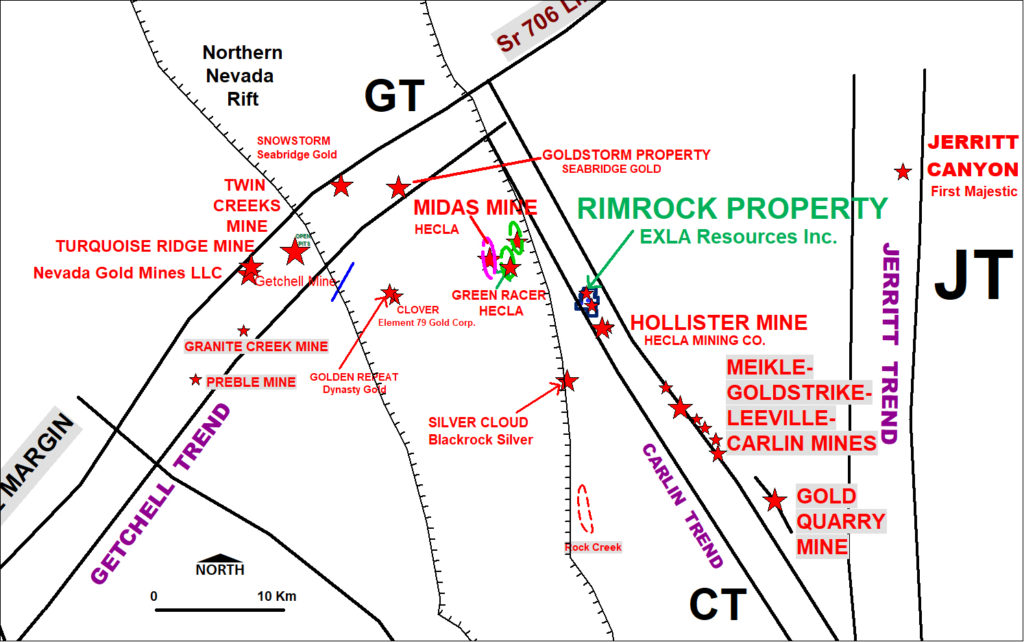
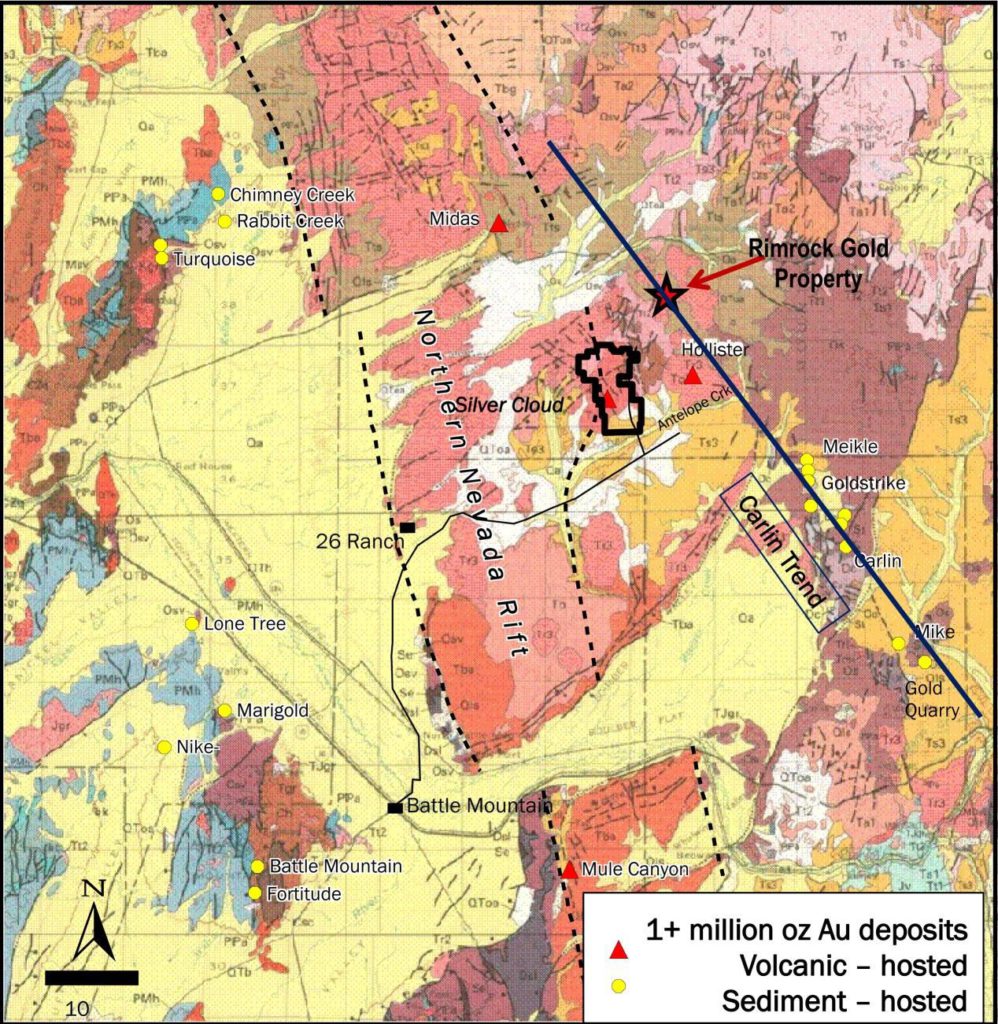

The strategic location of the project along the Midas Epithermal Trend near-surface and also directly on the Carlin Trend, near the surface and also at depth, gives the project a high level of prospectivity. The multi-target nature of the property means EXLA can target:
- low-sulfidation, high-grade gold-silver deposits that tend to be fault bounded and located in the upper 1,000m of geological sequences of Tertiary volcanic rocks and in Paleozoic Upper Plate quartzites and sandy to limy argillites.
- Carlin-style gold-(silver) mineralization, which tends to form below the contact of Lower Plate mudstones and underlying Paleozoic carbonate rocks. Carlin-style mineralization also is found in a sandy part of the Upper Plate sequence at Goldstrike and near Rimrock known as the Bazza Sandstones.
The previous operator of the project has already defined five high-priority targets (Figure 3):
- Dilation Target
- Ivanhoe Creek Target
- Silver Hill Target
- Shaft Zone Mineralization
- Columbus Breccia Target
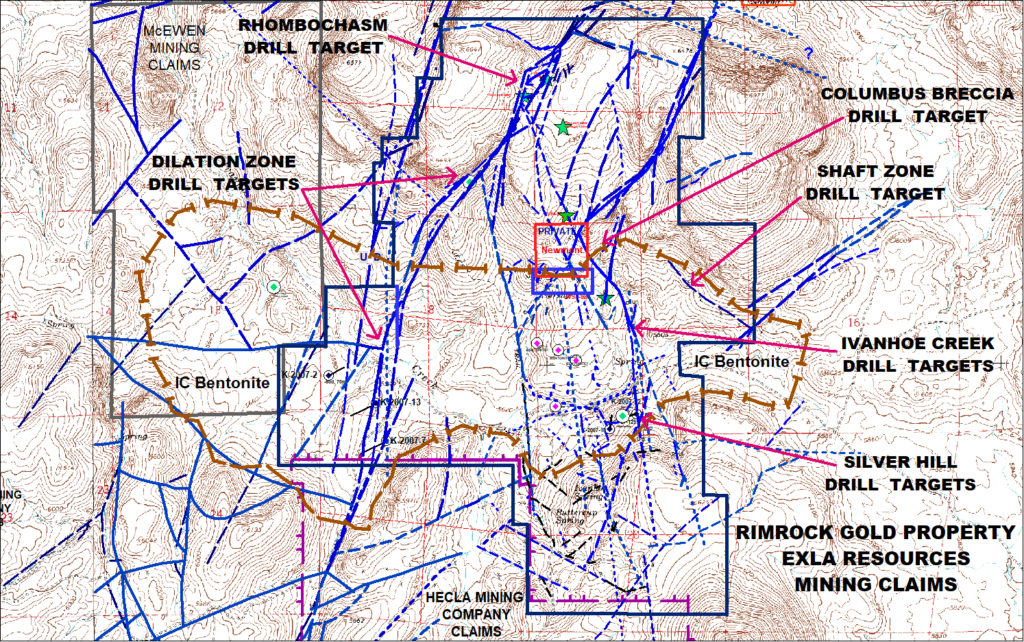
Exploration Targets
Dilation Target
The Dilation Target contains a 4 km long NNE-trending, locally mineralized, fault system (IC Fault) that occurs in the western part of the Rimrock Property.
A large fault jog is present; termed the “Rhombochasm” zone. This is over 200 meters wide and 1 km long, forming a major structural target for gold-silver mineralization. A small mercury prospect sits directly atop Rhombochasm, similar in nature to the mercury prospect that sat atop the Hollister Mine, which had high-grade epithermal gold below, at a mining centroid elevation of 1,550 metres.
Recent mapping completed in the summer of 2021 by the previous operator identified additional silicification 400 meters to the southwest from the end of the previous mapping, becoming gradually weaker and replaced by quartz-sericite-pyrite mineralization and eventually aerially extensive argillic alteration.
Previous shallow drilling completed in 2007 identified elevated gold mineralization (to 187 ppb) hosted in volcanic tuff, within this zone. Multi-elemental analyses indicate the gold interval is also elevated with respect to sulfur, selenium, arsenic, antimony, tungsten and molybdenum. To a lesser degree barium and rhenium are elevated. These results are indicative of Midas Style precious metals mineralization is extant in this area.
Ivanhoe Creek Target
The Ivanhoe Creek Target, located in the southeast portion of the Property, contains two large NNW-trending uplifted host fault blocks that were believed to have been re-activated at the time of the Carlin style mineralization in the region.
A zone of strong sediment-hosted silver-gold mineralization was drilled into the Eastern Horst Faults area at Silver Hill in 2007 by Kent Exploration, discovering disseminated silver-gold-tungsten mineralization in Palaeozoic mudstone and quarzitic sandstones. The East Hatter Fault extends southward into the Hollister Mine Complex, and likely was reactivated in Eocene time when Carlin-style gold mineralization was being emplaced along the Carlin Trend.
This mineralization could conceivably be a silver-rich halo above Carlin-style gold mineralization at further depth, along the periphery of the Eocene Hatter granitic stock system. Additional Miocene low-sulfidation Midas-style gold-silver mineralization appears to be present based on geochemical sampling. Overlapping mineral events increase the prospectivity of the system.
Silver Hill Target
The Silver Hill Target is a north-northwest oriented 4 km long zone of discontinuous silicic alteration of volcanic tuff and tuffaceous lithologies that is 100 to possibly 600 metres wide. Anomalous arsenic values were found locally along the trace of this structural system.
The widest portions of significant alteration are found at the south end in the vicinity of Silver Hill, an area underlain by high grade silver mineralization (to 262 ppm) intersected in the 2007 drill program. It extends to the north-northwest where it intersects to IC Fault system at Rhombochasm.
Shaft Zone Target
The Shaft Zone Target is a west-northwest trending faulted zone on the southwestern margin of a large flow dome of the Columbus Rhyolite (14.92 Ma) that contains a 19-metre-deep shaft developed in mercury-mineralized silicification. It is host to a widespread area of mixed silicification, quartz-sericite-pyrite and argillic alteration. It starts roughly 400 meters east of the Silver Hill Target and continues at least 670 meters to the southeast of the shaft.
Mineralization here is discontinues and mostly covered by cobble and boulder colluvium derived from the Columbus Rhyolite Porphyry. Silicification is principally chalcedonic replacement of tuff units, often associated with a halo of quartz-sericite-pyrite and argillic alteration.
Columbus Breccia Target
The Columbus Breccia Target is located in the northeastern part of the Rimrock Property. It contains a brecciated zone that cuts flow domes of Columbus Rhyolite, with silica and mercury-silica mineralization locally filling fractures and breccias, and again to the north where it eventually intersects and alters a large area of the basal units of the Rhyolite Porphyry.
Ivanhoe Creek Bentonite Mine Target
In addition to the gold-silver target areas, a large-size 5 by 1.7 km area occurrence of bentonite is covered in part by the central portion of the Rimrock claims, that overlies the gold-silver bearing strata. The bentonitization may have formed from hydrothermal alteration from the epithermal, low-sulfidation fluid system. Bulk sampling of this deposit took place in the 1980s, and Halliburton examined the occurrence in the late 2000s. Recent interest has been shown in this large deposit by outside parties.
